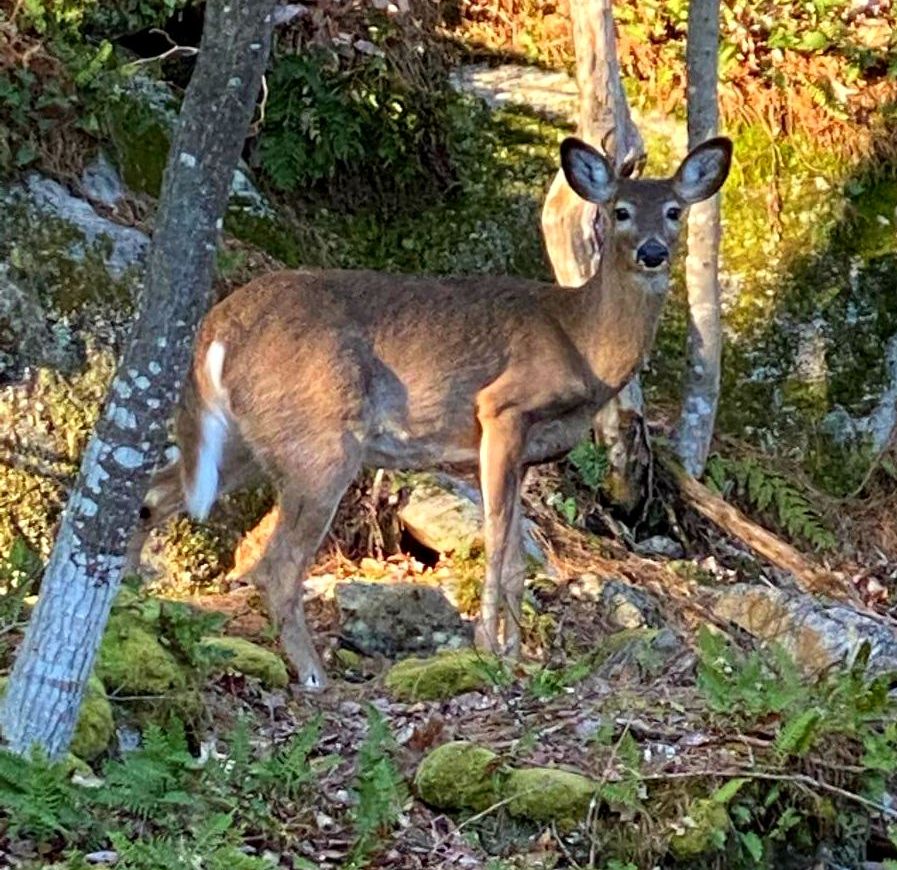by Trudy Irvine, Member of Education Committee
Videos courtesy of Liz Anderson-Peacock
The graceful white-tailed deer is the most widely distributed and most numerous of all the large mammals of North America, and it is always magical to spot them out in the islands of Pointe au Baril. They are strong swimmers, and spring and summer’s abundance of leafy and flowering plants, grasses, mushrooms, and berries make PaB’s larger islands suitable for them.
Spotted, wobbly-legged fawns are usually born during the last week of May or the first week of June. Under favorable conditions, twin fawns are the norm, although singletons are more common among younger does, especially those giving birth the first time. Very vulnerable for the first few weeks of life, fawns survive by disappearing into their bedding site – their spots mimic dappled sunlight, and their scent glands are undeveloped, allowing them to remain invisible to predators hunting by scent.
Does stay away from their fawns to keep them safe, returning at intervals to suckle them. People sometimes find fawns in their hiding places and mistakenly believe they have been deserted by their mothers. In fact, a doe will rarely desert her fawn and the little animals should not be touched. The human scent on the fawn may cause the doe to desert it. After about a month, the fawns are strong enough to follow their mother on foraging trips and supplement their milk diet by nibbling on vegetation. Feeding steadily as summer wears on, both doe and fawns become sleek and sturdy and by 8-10 weeks, the fawns are weaned. By late summer, the fawns have lost their spots, can outrun danger, and trail their mother closely – males for one year and females for two.
Please click on Liz’s photo for a video of a deer walking on Cambria Island.
In autumn, deer must rely on twigs, buds, and acorns within their reach, and in winter they may travel long distances to wintering grounds. Even the most favorable winter grounds have a limited food supply, and deep snow covering any fodder worsens the problem. Maintaining healthy numbers of deer is primarily a matter of keeping their numbers in balance with their winter supply of food, as many of their natural predators such as the grey wolf, coyote, and bobcat have been greatly reduced in numbers themselves.

